Apple announced its latest lineup of iPhones at the beginning of September, but it shook things up this year with a shiny new iPhone among the usual culprits.
The iPhone Air is the company’s “thinnest iPhone ever”, but it’s also one of the slimmest smartphones period – at 5.6mm, it’s even thinner than the 5.8mm Samsung Galaxy S25 Edge.
Now, some of you will no doubt be sitting there thinking, “who cares, it’s just a slimmer iPhone”, and that’s fair because to some degree, you aren’t wrong. However, having used the iPhone Air for the last week, I’d argue that it’s much more than just a skinny phone with no substance.
Here are five big reasons why it’s worth considering.
A stunning, future-gazing design
I’ll start with the design because let’s be honest, that’s what the iPhone Air is all about.
At 5.6mm, it’s thinner than a pencil and exactly the same thickness as two one-pound coins on top of each other. I know because I checked in order to give some real-world context.
I do believe this is a device that you have to hold and use yourself to truly appreciate, but at least that reference gives you some indication of how thin 5.6mm actually is.
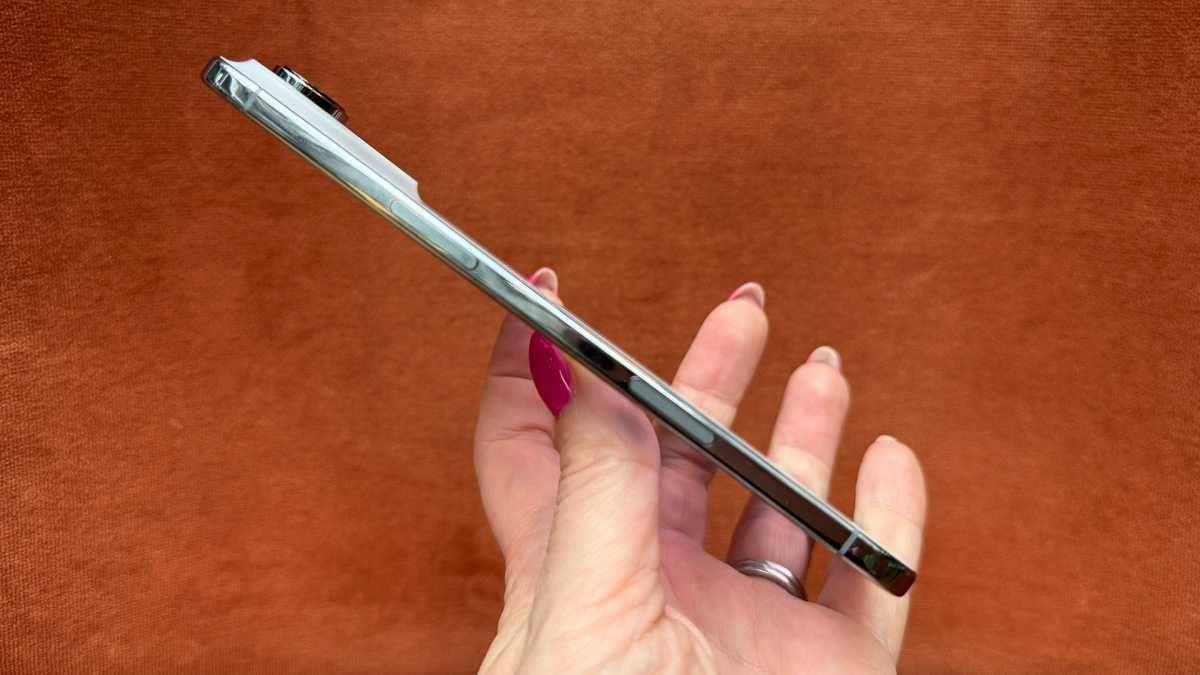
Britta O’Boyle / Foundry
The frame is a polished titanium, and while I would have chosen a matt finish like the iPhone 17 Pro models, it does result in a very premium-looking phone. Of course, you should expect no less from a phone that starts at £999/$999.
However, the mirrored finish does love a fingerprint mind, so be prepared to wipe it frequently unless you put a case on it.
This is a device that you have to hold and use yourself to truly appreciate
If you’re thinking about a case, though, I’d urge you to consider if the Air is really the phone for you. The official Bumper Case still allows you to experience the feel of the smooth, soft-to-touch rear (protected with Ceramic Shield for better scratch resistance), but there’s no denying it takes away some of the appeal of this phone by covering the frame.
Without a case, it’s gloriously lightweight (coming in at just 165g), and the slim frame feels superb. Crucially, though, the iPhone Air feels like one half of what a foldable iPhone could be in the future. Based on my experience with the Air so far, I’d be all in favour of two Airs in one device.
The smart front camera is superb
When it comes to the rear camera, there are some big compromises on the iPhone Air. It only has a single sensor, though Apple claims that this 48Mp ‘Fusion’ camera gets you the equivalent of four lenses in one.
What this means is that you can shoot in different focal lengths from that one sensor by jumping between them in the Camera app, with options for 24mm (1x), 26mm (1.1x), 28mm (1.4x) and 35mm (2x). The 35mm option is where you’ll find the extent of the Air’s zoom capabilities, maxing out at 2x optical. It can do up to 10x digital, but I would never recommend using digital zoom on any phone if you care about the image quality.
Results from the single main camera are brilliant
The iPhone Air can’t shoot in macro for the super close-up shots either, and there is no ultra-wide camera (unlike the standard iPhone 17) for the times when you want to fit a little more into your shot. These compromises are undeniable and limit the versatility of the camera system as a whole.
However, results from the single main camera are brilliant. They offer plenty of detail, with naturally balanced colours and a consistently high-quality photo that few handsets can match. I’ve been pleased with all the shots I have taken over the last week, in both good lighting and low light.
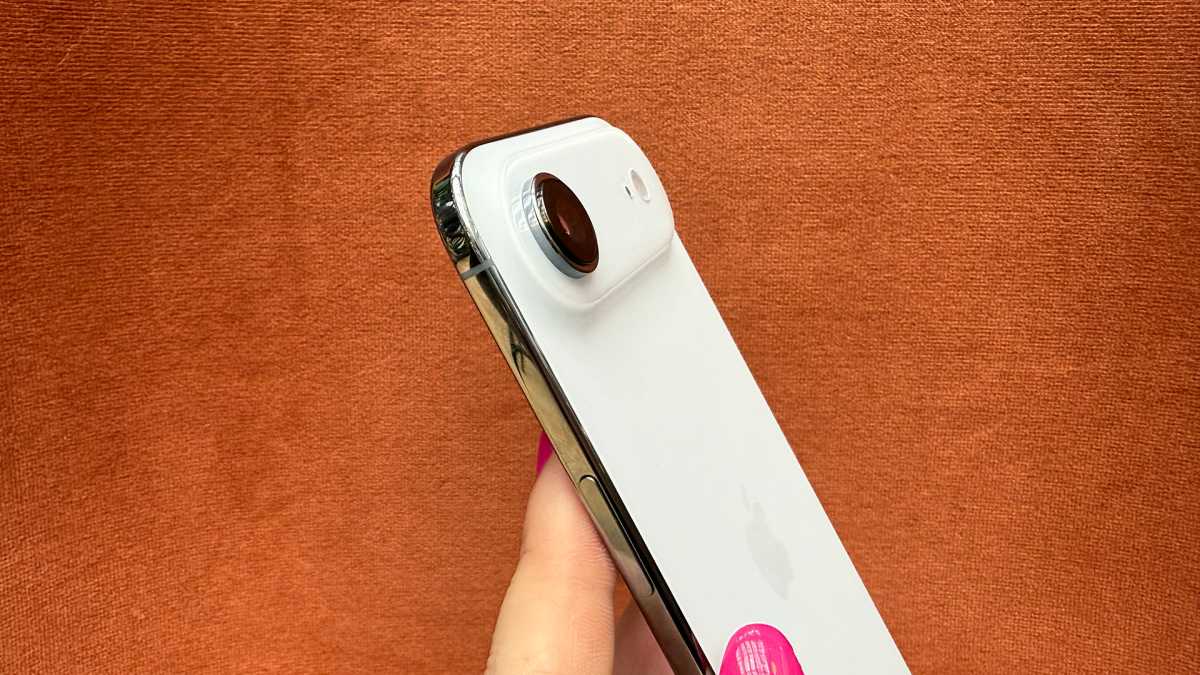
Britta O’Boyle / Foundry
The front camera is also excellent. It’s an 18Mp ‘Centre Stage’ lens, matching what you’ll find on the iPhone 17 and the 17 Pro models, and an upgrade on the 12Mp sensor found in the last few generations of iPhone.
The Centre Stage tech is the same as what’s been on the iPad for years, keeping you in the frame if you move around. If someone else joins your selfie, the front camera on the iPhone Air zooms out to get them in. It’s similar to the Auto Zoom feature on Samsung’s Galaxy Z Flip 7 when it’s in Flex Mode and works very well.
Additionally, on-screen buttons allow you to seamlessly switch between a portrait and a landscape selfie without rotating the phone. It’s superb, and stops the awkward shots where people aren’t looking in the same direction. The Dual Capture feature that allows you to simultaneously record your reaction and film using the rear cameras is great too, and one I can see being used for the likes of sporting events or concerts.
It’s got a Pro-level display
You might have to make do with one rear camera lens on the iPhone Air, but you don’t have to contend with a sub-par display. You’ll find an identical display to the iPhone 17 Pro models in terms of technology, and that includes the ProMotion tech that allows for a dynamic refresh rate up to 120Hz.
Now, you can’t choose what refresh rate the display is using at any one time – the OS decides for you – but it means you get a lovely, smooth scrolling experience almost all the time.
In terms of size, the iPhone Air is 6.5 inches, putting it between the iPhone 17’s 6.3-inch display and the 17 Pro Max’s 6.9-inch panel. In my opinion, it’s the perfect size, offering you a big enough screen to watch movies on and actually enjoy them, whilst also being usable one-handed.
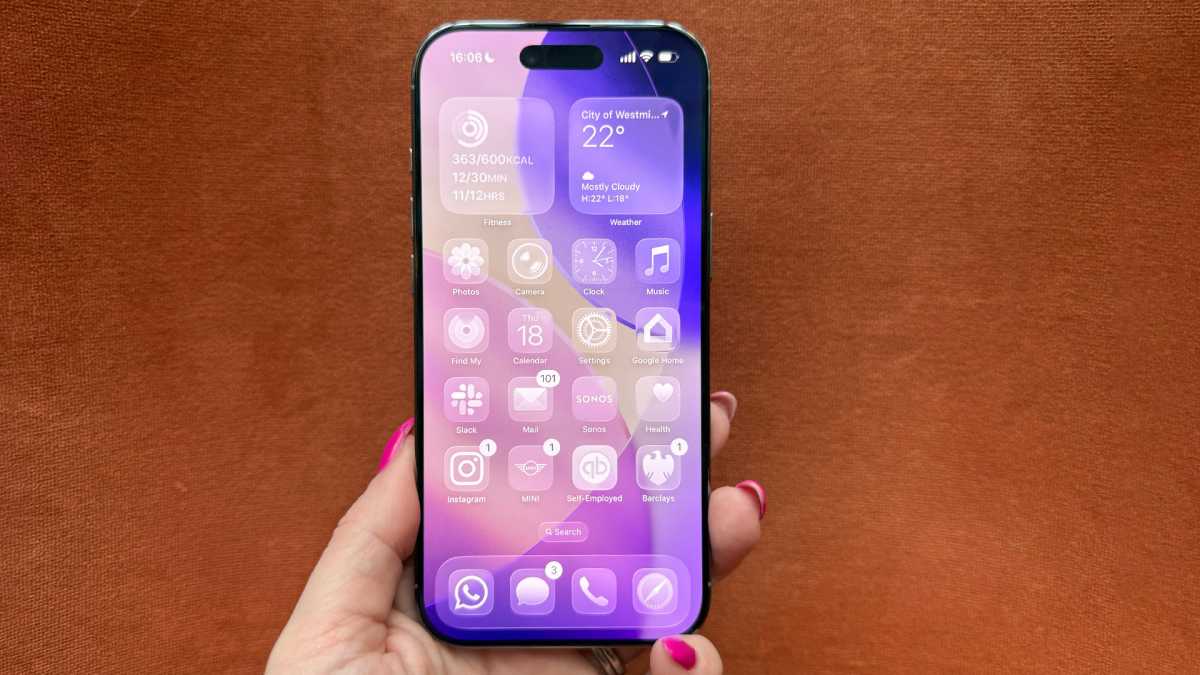
Britta O’Boyle / Foundry
I love my iPhone 16 Pro Max (the phone I used before the iPhone Air), but reaching the top of its display is not easy without two hands.
With a resolution of 2736 x 1260, the iPhone Air has the same pixel density as the iPhone 17 and iPhone 17 Pro models – 460ppi. It also has the same peak brightness of 3000 nits, which is the brightest display Apple has ever offered on an iPhone.
That peak will only kick in when absolutely necessary, of course, but it’s more than bright enough to be visible on a bright sunny day, cutting through the reflections. Colours are great too, saturation is good, and the general viewing experience is a delight.
The battery is better than you’d expect
When it comes to battery life, I’ll be honest, I expected it to be terrible on the iPhone Air.
When it was announced, Apple claimed the Air would last 27 hours on a single charge, which is respectable, though lower than the iPhone 17 that’s said to last 30 hours, the iPhone 17 Pro’s 31-hour estimate that’s claimed to last 31 hours and the iPhone 17 Pro Max that’s claimed to give you 37 hours. There’s also the option of buying the iPhone Air MagSafe charger (an extra £99/$99)that will apparently give you up to 40 hours.
The battery life has undoubtedly exceeded my expectations
I’ve got great news here, though, because having used the iPhone Air for the last week, I not only haven’t had to attach that MagSafe Charger yet, but the battery life has undoubtedly exceeded my expectations.
I think 27 hours would be a push, but I finished all days on over 25 percent, despite typically regularly starting my day at 6am and ending it at midnight. In my experience, the iPhone Air gets me through a day and evening, though if I was planning on a big night out, I’d top it up towards the end of the day just to be sure.
Speaking of topping it up, the iPhone Air supports fast charging, at least by Apple’s standards. This is not a OnePlus phone with 100W fast charging, but you will get 50 percent battery in 30 minutes from a 20W adapter.
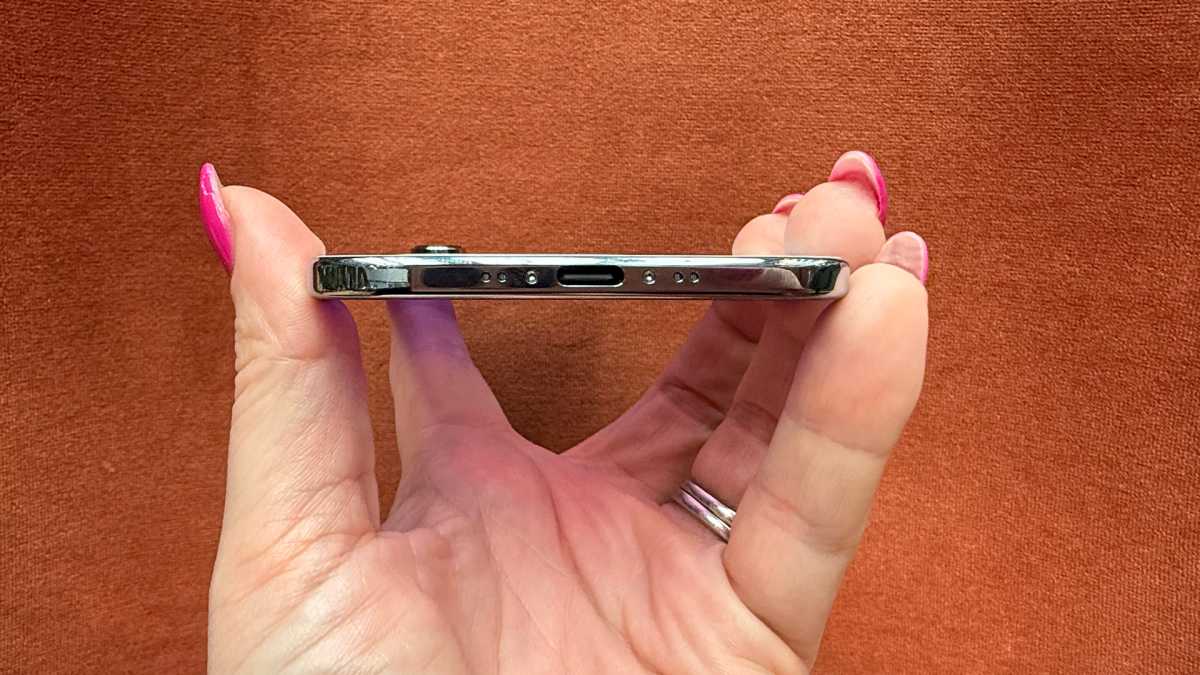
Britta O’Boyle / Foundry
Performance is truly excellent
My last reason in favour of the iPhone Air not being a vacuous slim phone is that it has the same processor under its hood as the iPhone 17 Pro models. The A19 Pro runs the show, and performance is smooth and lag-free with apps opening swiftly and tasks running without any issues.
Occasionally, the top of the iPhone Air gets a little warm, but only for a few seconds and no warmer than most phones. For sustained performance, I would recommend the iPhone 17 Pro models as these now come with a vapour chamber, which allows for better heat dissipation.
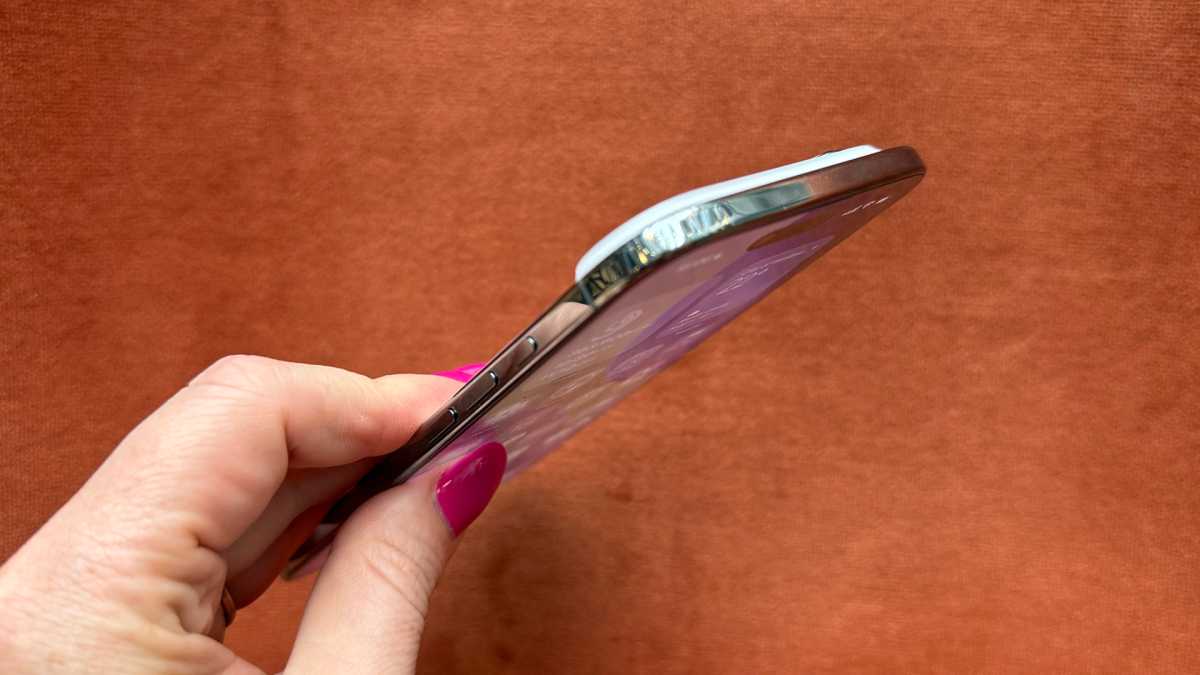
Britta O’Boyle / Foundry
However, in the vast majority of situations, the iPhone Air delivers superb performance that won’t let you down.
In the vast majority of situations, the iPhone Air delivers superb performance that won’t let you down
But consider this before you hit buy
As good as the iPhone Air is, you need to be sure that it’s what you want from a phone.
With a starting price of £999/$999, you could get the iPhone 17 Pro for just £100/$100 extra, accessing a superior rear camera system in the process – including a dedicated ultrawide lens and telephoto with 8x optical zoom.
Or, you could pay £200/$200 less and buy an iPhone 17, which offers better value for money and still offers an extra camera lens compared to the Air.
But if design is your top priority, the iPhone Air feels amazing. It’s refreshingly lightweight, and I’m thrilled to say its battery life doesn’t suck. Don’t pay too much attention to the downgraded specs – they don’t tell the full story.














